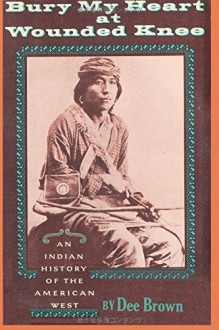First printed in 1970, Bury My Heart at Wounded Knee has become known as one of the great classics of Native American literature. This groundbreaking novel foreshadowed Indian civil rights movements like AIM, and galvanized political activists like Russell Means and Marlon Brando, among others....
show more
First printed in 1970, Bury My Heart at Wounded Knee has become known as one of the great classics of Native American literature. This groundbreaking novel foreshadowed Indian civil rights movements like AIM, and galvanized political activists like Russell Means and Marlon Brando, among others. This very sad story, which ends with the murders of many Lakota men, women and children, symbolizes the End of Time for Native American people. The majority of White-educated America (if you'll excuse the expression, and also if you won't) knows little more than whichever sanitized story of Indian life is taught to them for two weeks during middle school. Far too many people aren't even quite sure if Indians still exist. Of those who know they exist, some small percentage actually think they still live in teepees. The Wounded Knee Massacre did, in fact, mark the end of what is now called "The Indian Wars." Yet, the people lived on, and their triumphant descendants still maintain a solid foothold in politics, law, medicine, arts, and all other aspects of today's American culture. The generation of people involved in the Wounded Knee Massacre have an especially heartbreaking history. They were the last ones removed to reservations. They were the ones who remembered what it was like to be free. Their children would never know the lives their parents knew, and would never learn to hunt. They would spend their childhoods hearing sad stories told to them by weeping elders.
show less

